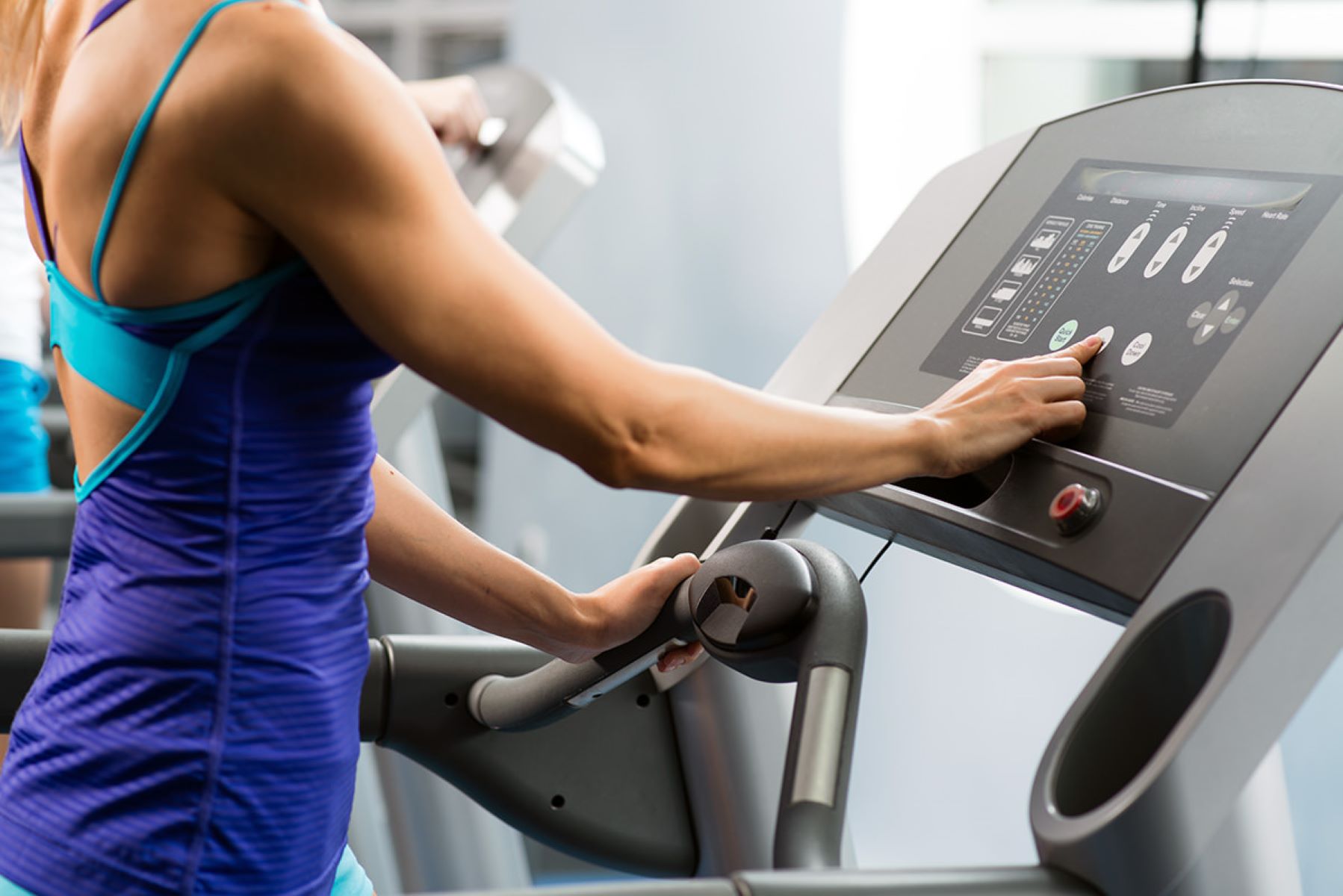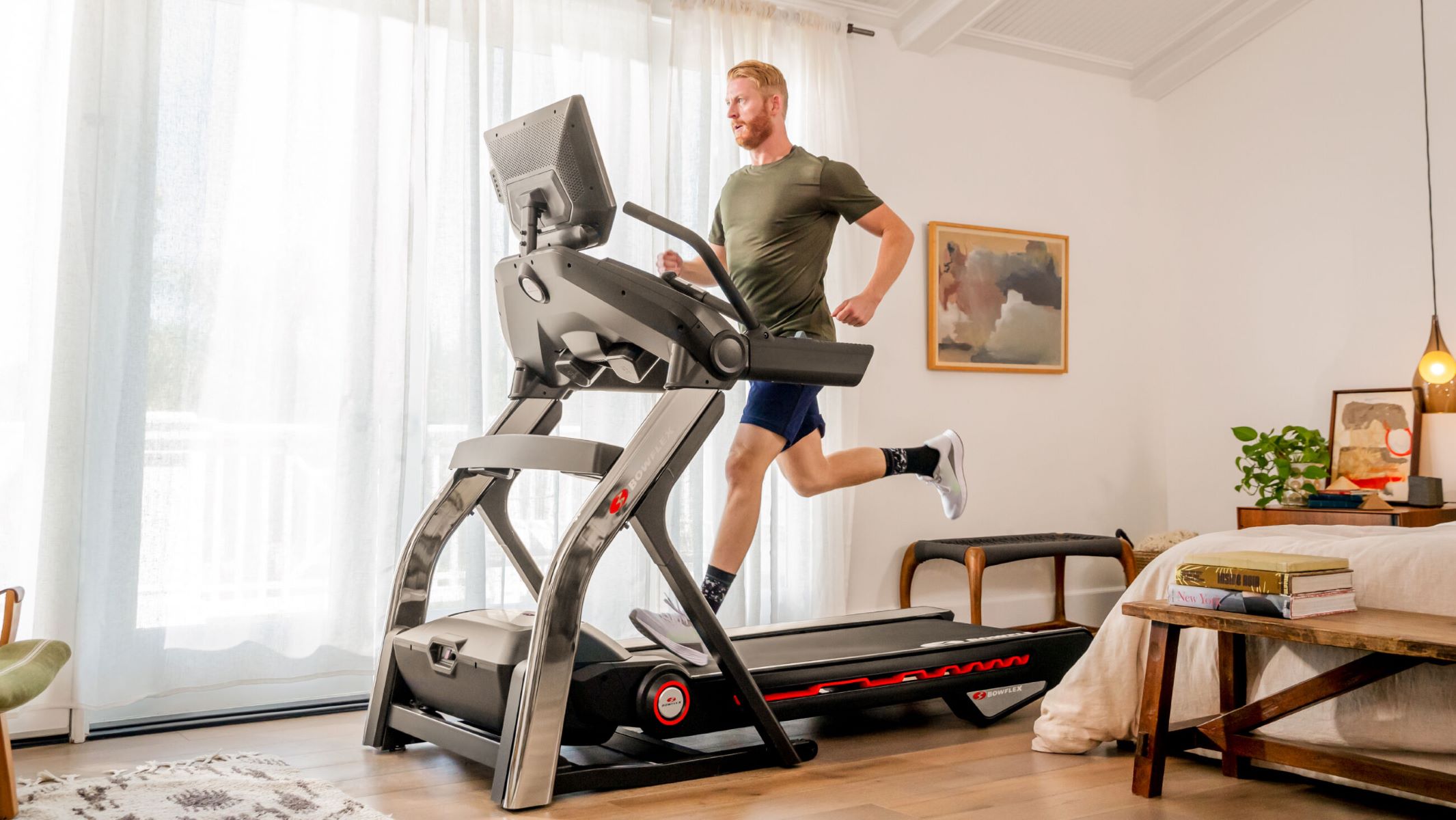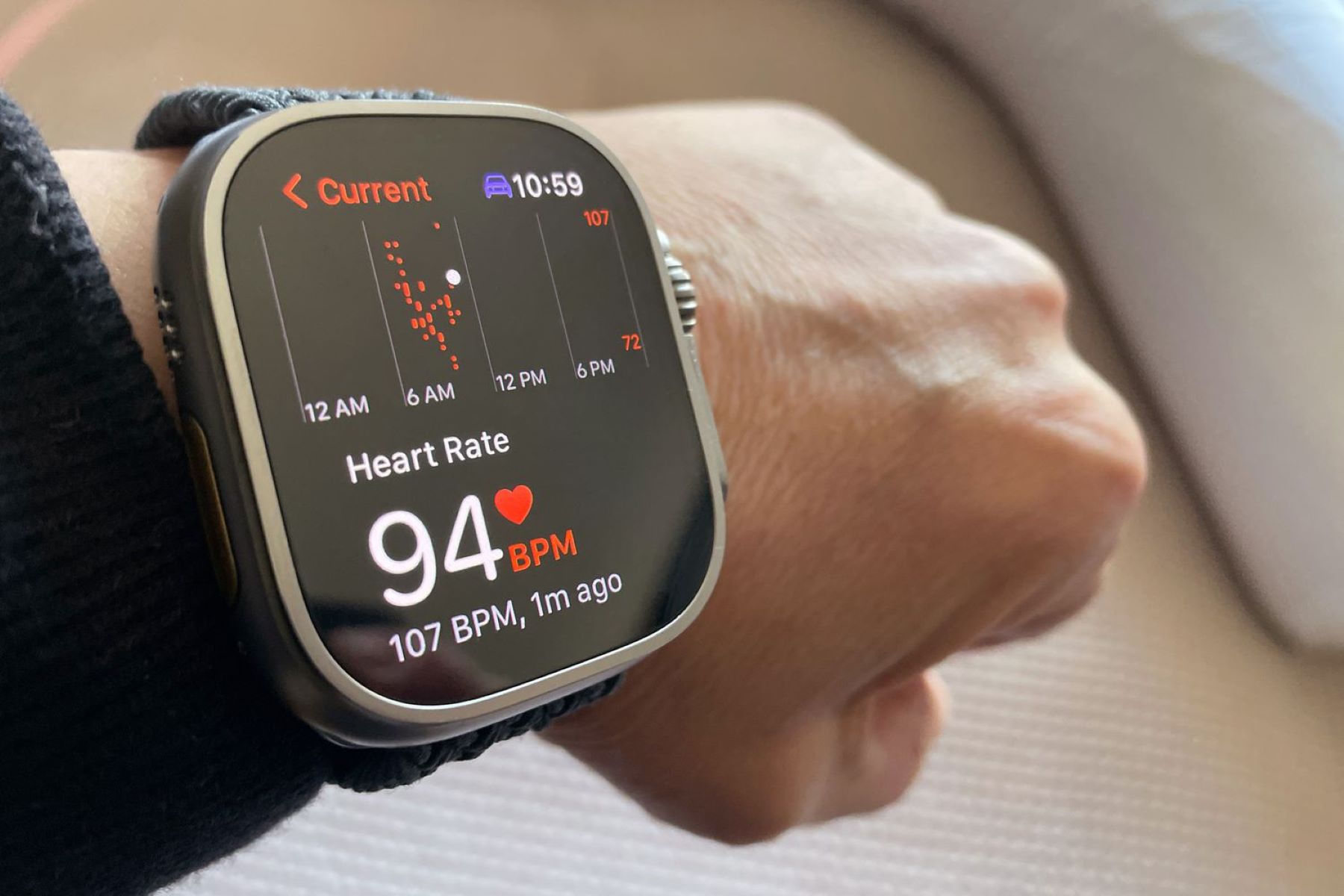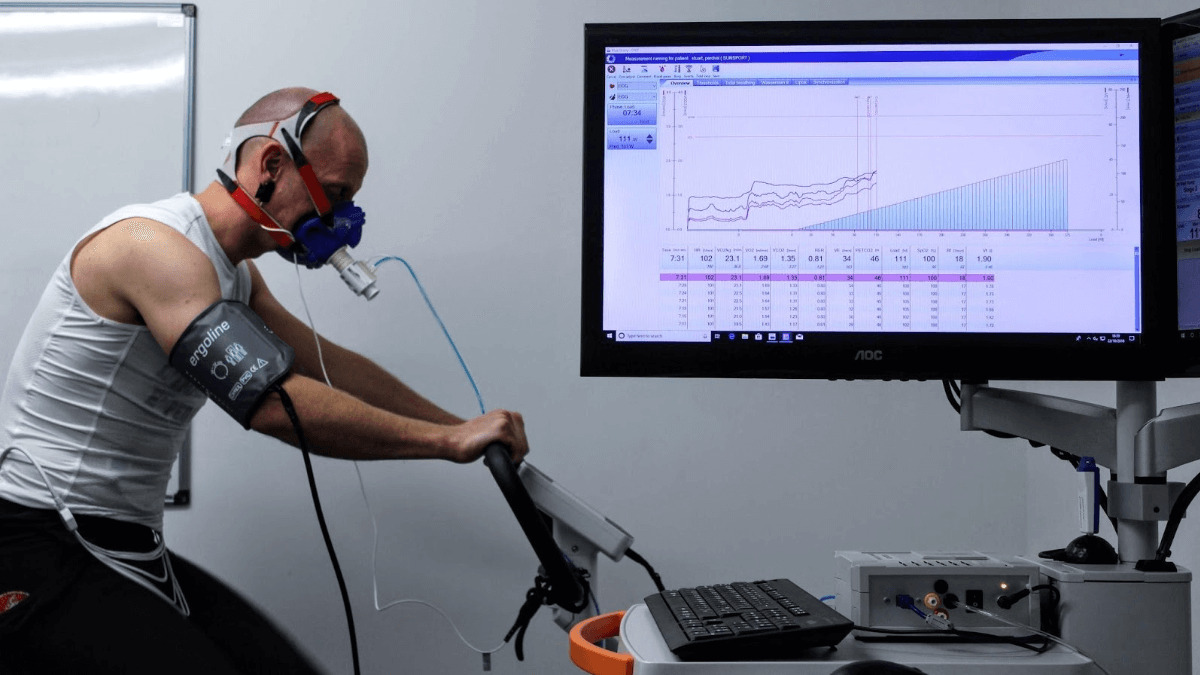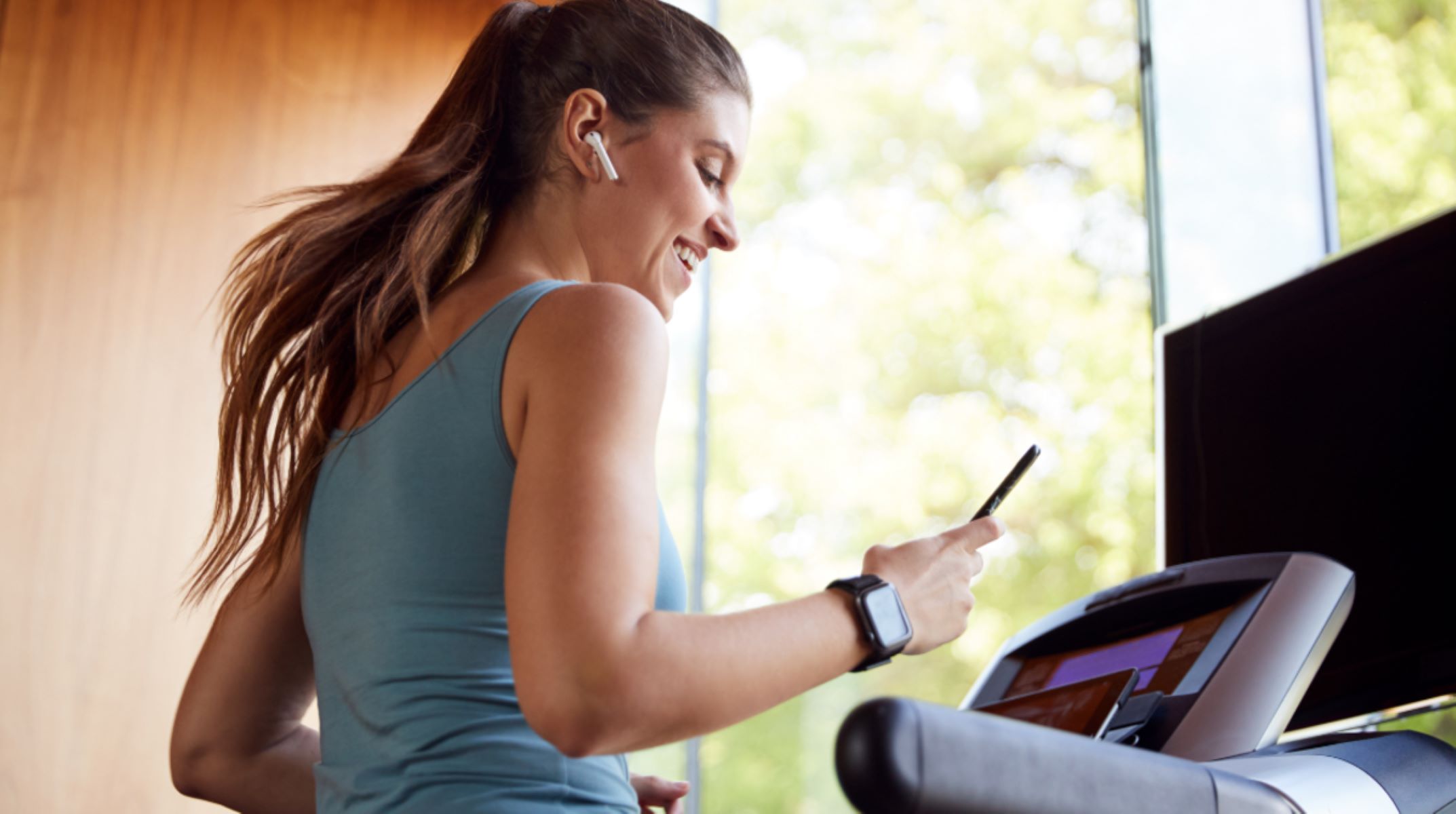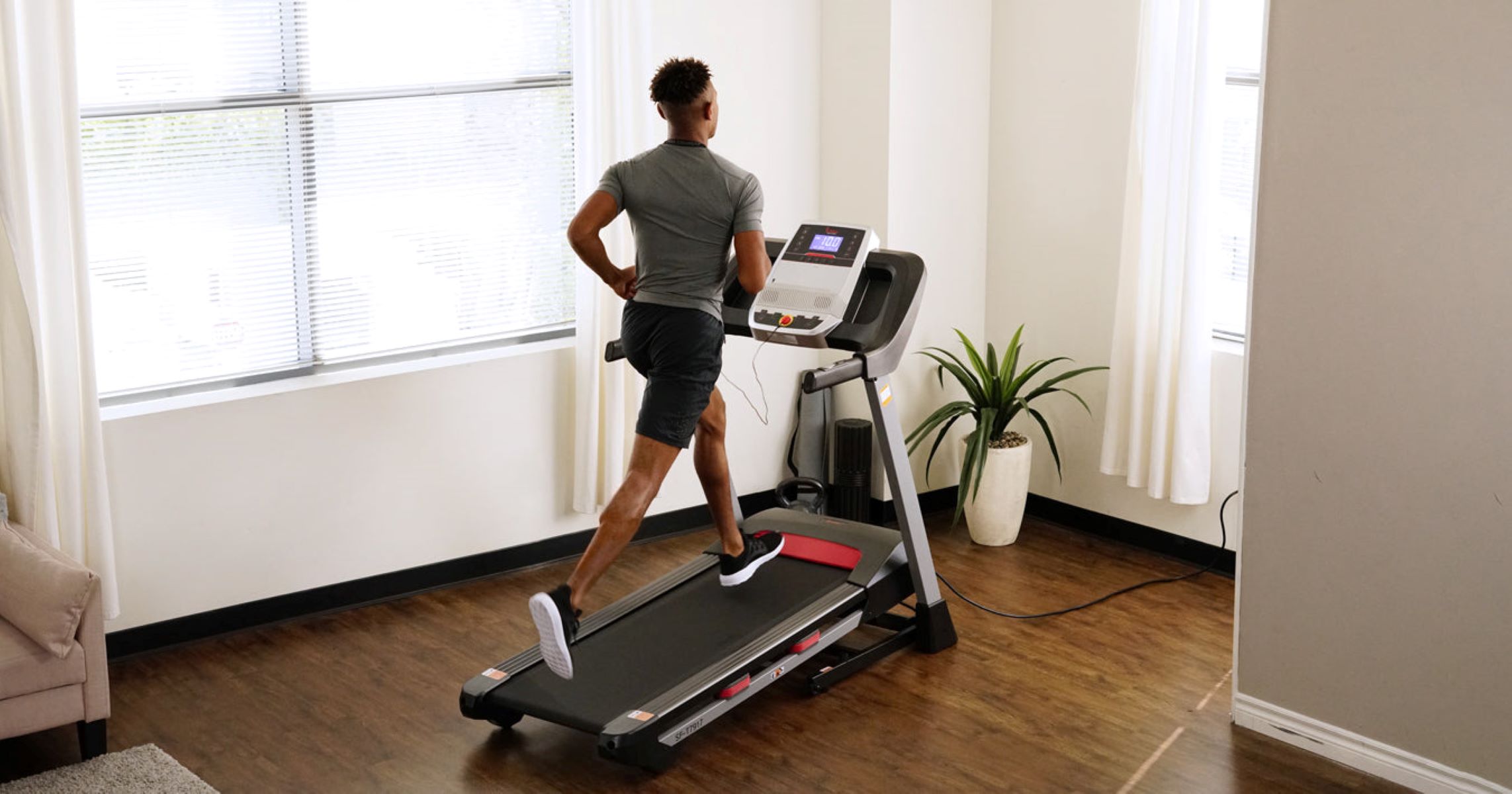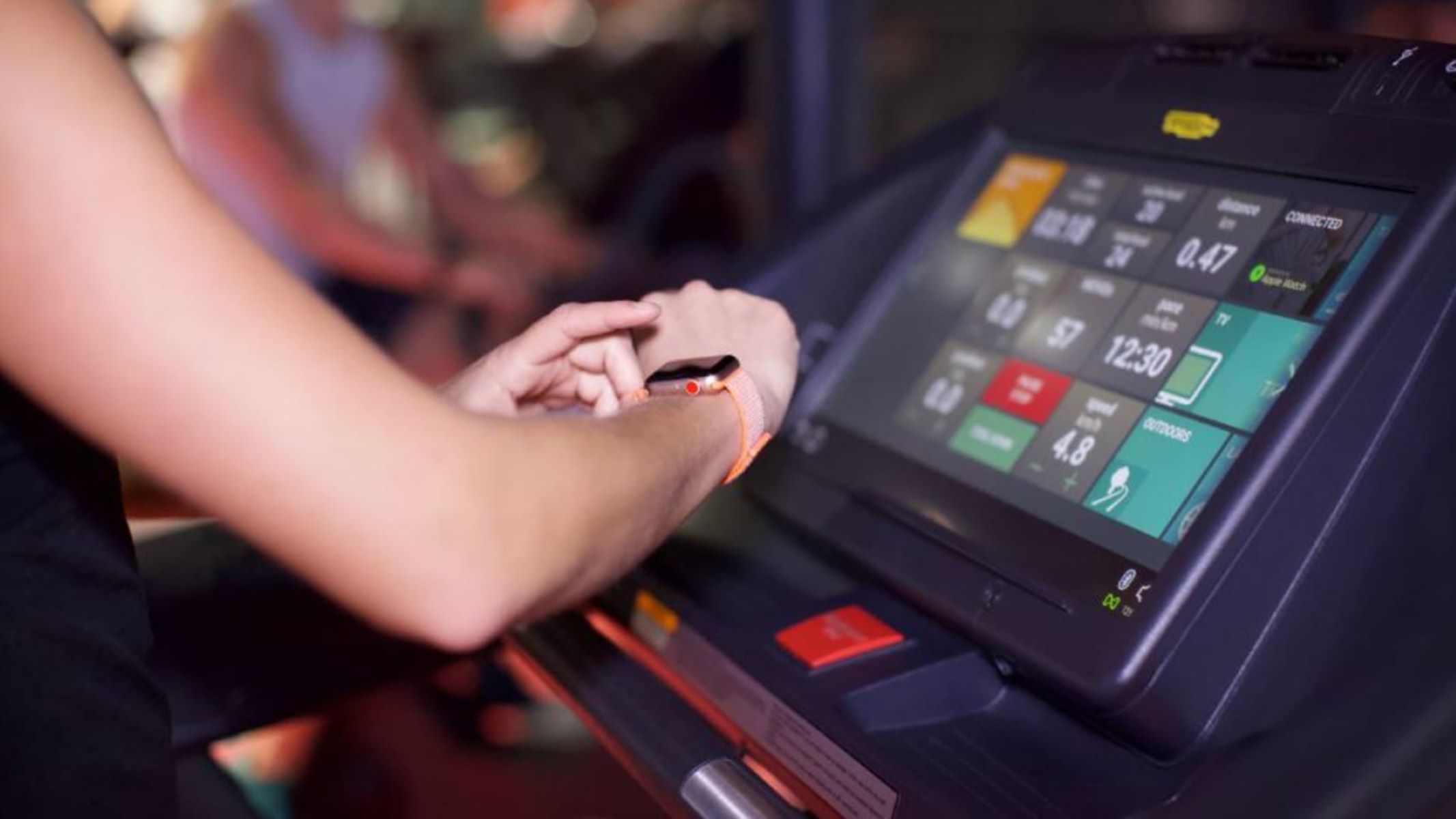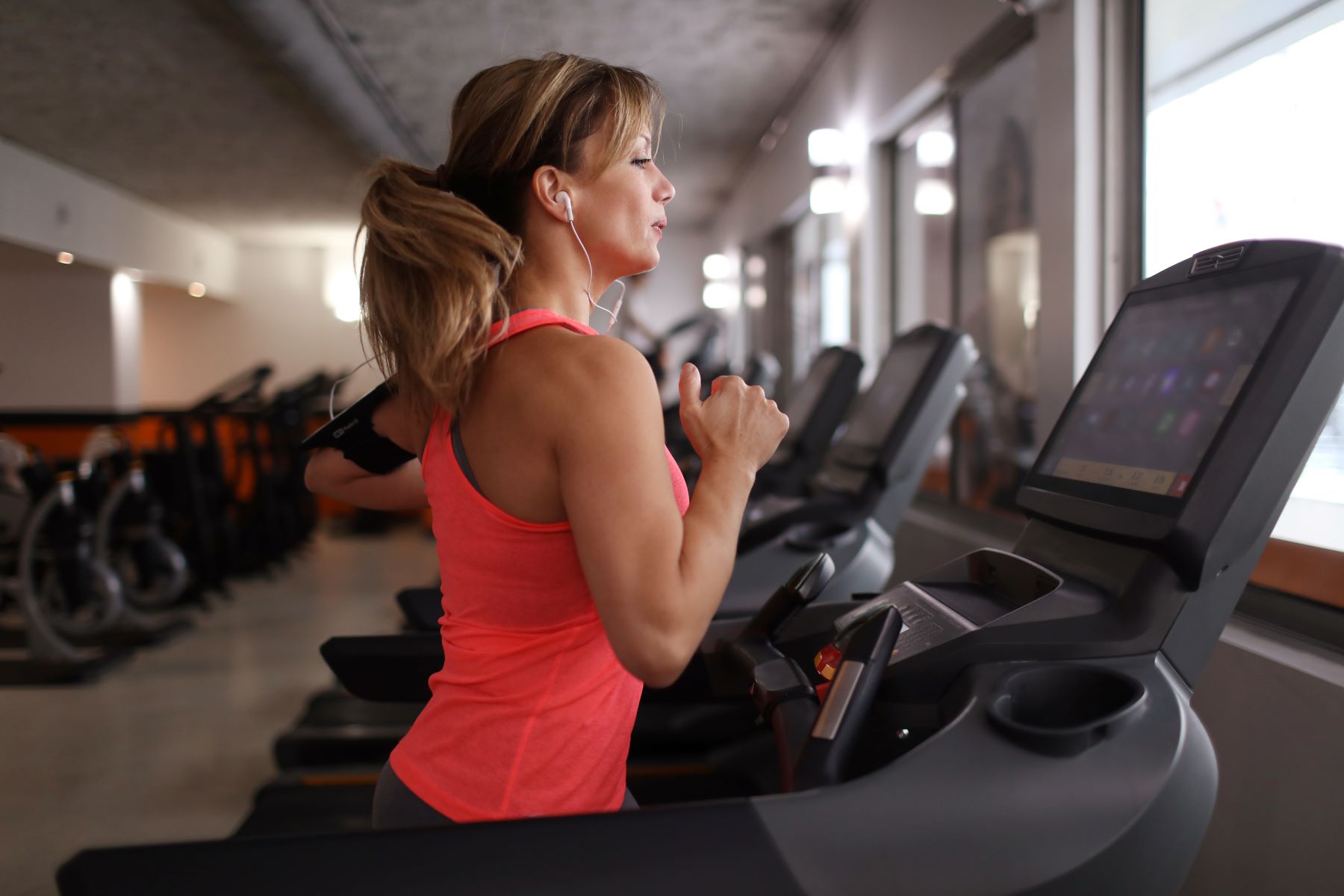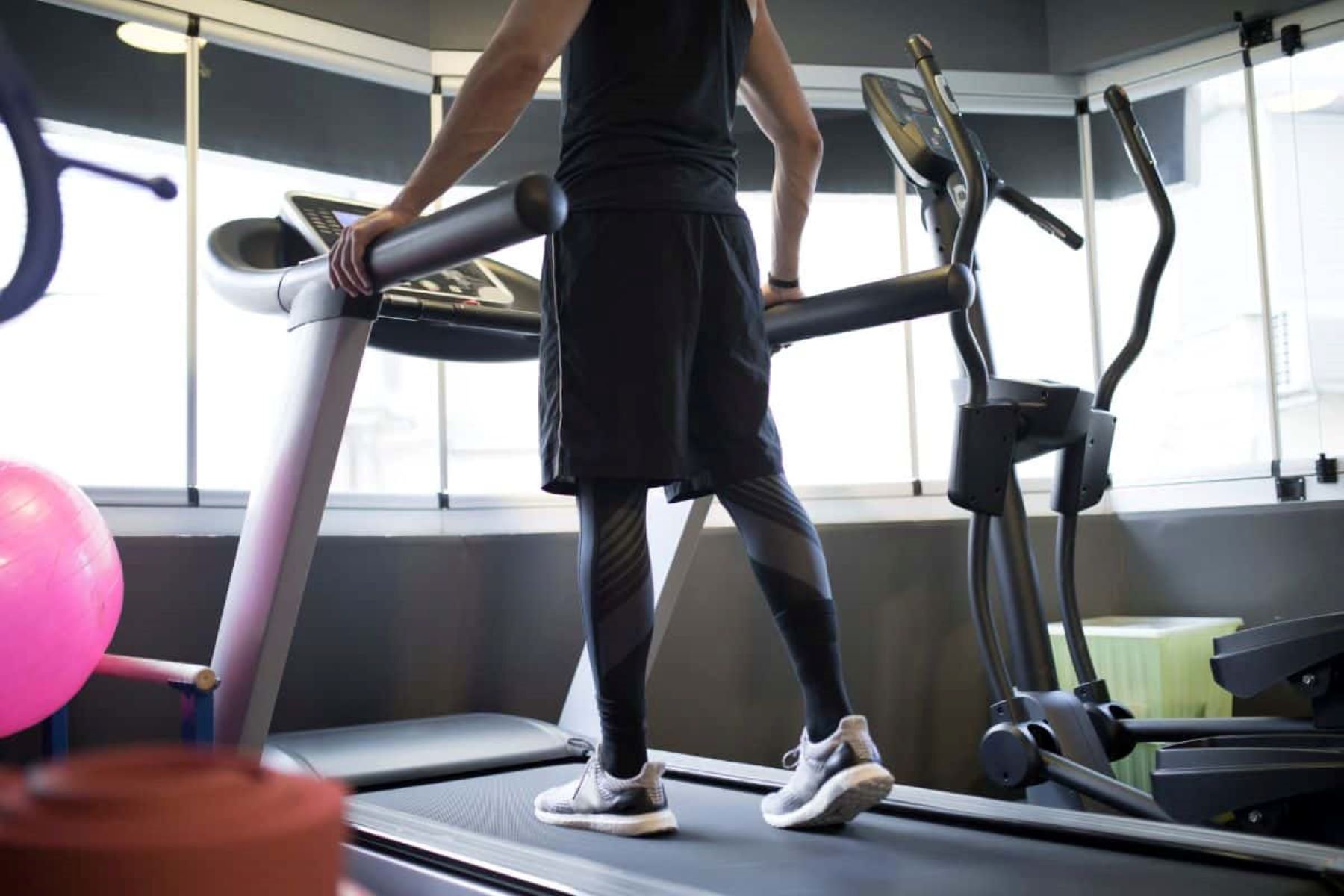

Featured
How Does A Treadmill Measure Distance
Modified: January 2, 2024
Discover how a featured treadmill accurately measures distance and enhances your running experience.
Introduction
Whether you’re a seasoned runner or just starting your fitness journey, the treadmill is a popular choice for indoor workouts. Not only does it provide a convenient way to get your daily dose of exercise, but it also offers various features to keep track of your progress and goals. One such feature is the ability to measure distance covered during your workout.
Understanding how a treadmill calculates distance is essential to track your progress accurately and stay motivated. This article will delve into the mechanism behind distance measurement on treadmills, factors that affect its accuracy, and tips to ensure precise measurements.
While treadmills provide an efficient and controlled environment for running or walking, the challenge lies in replicating the experience of outdoor running where distance is naturally measured by landmarks and GPS. Treadmills rely on different methods to estimate and display the distance covered based on the data collected from their internal sensors and algorithms.
As you embark on your fitness journey on the treadmill, it is essential to understand how distance is measured, how accurate these measurements are, and what you can do to ensure precision. So, let’s dive in and uncover the secrets behind how treadmills calculate distance!
Understanding the Basic Mechanism of a Treadmill
Before we delve into how treadmills measure distance, it’s important to have a basic understanding of their mechanical structure. A treadmill consists of a running belt that moves on a motorized platform. The speed of the belt can be adjusted to match your desired pace, whether it’s a brisk walk, a jog, or a full-out sprint.
When you step onto the treadmill, the motion of your feet propels the belt backward. The motor then works to keep the belt moving at a consistent speed, creating the sensation of walking or running. Along with speed control, treadmills also offer various features like incline adjustments, heart rate monitoring, and distance tracking to enhance your workout experience.
In order to accurately measure the distance you cover during your treadmill workout, the machine employs a combination of sensors and calculations. These sensors detect the movement of the belt and relay the data to the treadmill’s computer system. The computer then analyzes this data to determine the distance traveled.
Most modern treadmills come equipped with optical sensors located near the front roller or motor. These sensors use a beam of light to detect the movement of the belt. Whenever the belt passes over the sensors, it interrupts the beam of light, and the computer registers a step or a specific distance unit completed.
In addition to optical sensors, some high-end treadmills utilize magnet-based sensors. These sensors are embedded in the front roller or a separate wheel and connect to a magnet attached to the belt. As the belt moves, the magnet passes by the sensors, creating a signal that allows the computer to calculate the distance traveled.
The accuracy of the distance measurement on a treadmill depends not only on the quality and precision of these sensors but also on the calibration and programming of the treadmill’s computer system. Manufacturers go through a calibration process to ensure more accurate reading, but it’s important to note that there can still be some variation.
Now that we have a grasp of the basic mechanism of a treadmill, let’s explore how these machines calculate the distance covered during your workout.
How Treadmills Calculate Distance?
Treadmills use a variety of methods to calculate the distance you cover during your workout. The most common method is based on the number of revolutions made by the belt around the treadmill’s rollers. The treadmill’s computer system uses the circumference of the rollers, which is pre-programmed into the machine, to convert the number of revolutions into distance.
For example, if the circumference of the roller is known to be 1 meter, and the belt completes 1,000 revolutions, the treadmill would calculate the distance covered as 1,000 meters or 1 kilometer.
Some treadmills also take into account the stride length of the user to calculate distance. By inputting information such as height, weight, and gender, the treadmill’s computer system can estimate your average stride length. It then multiplies the number of steps taken by your estimated stride length to determine the distance covered.
Another method that some treadmills employ is the use of accelerometers. These sensors measure changes in speed and acceleration to calculate the distance traveled. By tracking your acceleration and deceleration patterns while walking or running, the treadmill’s computer system can estimate the distance covered with greater accuracy.
In recent years, advancements in technology have led to the incorporation of GPS capabilities in certain high-end treadmills. With built-in GPS functionality, these treadmills can provide more accurate distance measurements by utilizing satellite data to track your movements.
It’s important to note that while treadmills strive for accuracy in distance calculation, there can be slight variations between the displayed distance and the actual distance covered, especially in lower-end models. Factors such as belt slippage, calibration issues, and individual running or walking patterns can contribute to these discrepancies.
In the next section, we will explore the factors that can affect the accuracy of distance measurement on treadmills.
Factors That Affect Measurement of Distance on a Treadmill
While treadmills strive to provide accurate distance measurements, there are several factors that can affect the precision of these calculations. It’s important to be aware of these factors to better understand any variations you may notice in the displayed distance on your treadmill:
- Belt Slippage: Over time, the treadmill belt may wear out or become loose, causing slippage. This can result in inaccurate distance measurements as the belt may not be moving at the intended speed programmed by the treadmill’s computer system.
- Calibration: Treadmills go through a calibration process during manufacturing, but slight variations can still occur. Inaccurate calibration can lead to distance miscalculations. Calibration issues may become more noticeable with older or heavily used treadmills.
- Running or Walking Technique: Your specific running or walking technique can also affect the accuracy of distance measurements. For example, if you tend to take longer strides or change your pace frequently, it may result in slight variations in the distance calculations compared to a more consistent gait pattern.
- Environmental Factors: While treadmills are primarily designed for indoor use, certain environmental factors can impact distance measurements. For instance, changes in temperature and humidity can affect the performance of the treadmill’s sensors, leading to slight variations in distance readings.
- Weight Distribution: Uneven weight distribution, such as leaning more on the handlebars or placing excessive pressure on one side, can interfere with the accurate measurement of distance. It’s important to maintain proper form and distribute your weight evenly for more precise calculations.
- Machine Age and Quality: Older or lower-quality treadmills may be more prone to distance measurement inaccuracies. It’s important to ensure that the treadmill you’re using is well-maintained and properly calibrated to minimize any potential discrepancies.
By understanding these factors, you can take appropriate measures to enhance the accuracy of distance measurements on your treadmill and make necessary adjustments if needed. In the next section, we will discuss tips to ensure accurate distance measurement on treadmills.
Accuracy of Distance Measurement on Treadmills
When it comes to measuring distance on a treadmill, it’s crucial to understand that the accuracy can vary depending on several factors. While manufacturers strive to provide precise measurements, it’s important to be aware of the limitations and take necessary steps to improve accuracy:
1. Belt Maintenance: Regular maintenance and proper tensioning of the treadmill belt can minimize belt slippage, ensuring a more accurate measurement of distance. Follow the manufacturer’s guidelines on belt lubrication and maintenance to keep the treadmill in optimal condition.
2. Calibration: If you notice significant discrepancies in distance measurement, consider calibrating the treadmill. Most treadmills have calibration procedures outlined in the user manual, allowing you to fine-tune the accuracy of distance calculations.
3. Running Surface: The running surface on which your treadmill is placed can impact the accuracy of distance measurements. Make sure the treadmill is placed on a level surface to eliminate any inclines or declines that can affect the calculation of distance.
4. Stride Length: If your treadmill allows for inputting your stride length, make sure to enter the most accurate information. This will help the treadmill’s computer system calculate distance more precisely based on your individual stride.
5. User Input: When starting a workout, make sure to input your weight and height accurately. This information is often used by the treadmill’s computer system to estimate stride length and improve the accuracy of distance calculations.
6. GPS Integration: If you have access to a treadmill with built-in GPS capabilities, consider relying on GPS rather than internal sensors for more accurate distance measurements. GPS-enabled treadmills can provide highly accurate data based on satellite tracking of your movements.
7. Use Additional Tracking Devices: For even greater accuracy, use external fitness trackers or smartwatches that have their own distance tracking capabilities. These devices often use GPS or other advanced sensors to measure distance, providing an additional point of comparison with the treadmill’s measurements.
It’s important to note that while treadmills strive for accuracy, there can still be minor variations in distance measurements due to factors such as individual running form, belt wear, or sensor calibration. The key is to maintain consistency in your workouts and use these tips to minimize any inaccuracies.
By understanding the factors that affect accuracy and implementing these measures, you can ensure a more reliable reading of distance covered on your treadmill and make your workout experience more effective and satisfying.
Tips to Ensure Accurate Distance Measurement on Treadmills
While treadmills are designed to provide distance measurements, ensuring accuracy can sometimes be a challenge. However, by following these tips, you can improve the accuracy of distance measurement on your treadmill:
1. Regular Maintenance: Proper maintenance is essential for accurate distance measurement. Keep your treadmill clean, lubricate the belt as instructed by the manufacturer, and check for any signs of wear or damage regularly.
2. Calibration: If your treadmill has a calibration feature, make use of it to ensure accurate distance measurement. Follow the instructions provided by the manufacturer on how to calibrate your specific treadmill model.
3. Correct Stride Length: Enter your correct stride length into the treadmill’s settings. This information helps the treadmill’s computer system calculate distance accurately based on your individual stride length.
4. Maintain Proper Form: Ensure that you maintain proper form while running or walking on the treadmill. Avoid leaning on the handlebars, as this can impact the accuracy of distance measurement. Stand straight and let your legs do the work.
5. Consistent Pace: Try to maintain a consistent pace throughout your workout. Sudden changes in speed can affect the accuracy of distance measurement. Gradually increase or decrease your pace, rather than making abrupt changes.
6. Use an External Device: Consider using an external fitness device or smartphone app that tracks distance using GPS. This can provide an additional point of reference for measuring the accuracy of your treadmill’s distance measurement.
7. Warm-Up and Cool-Down: Start your treadmill workout with a short warm-up and end it with a cool-down period. This allows your body to adjust to the treadmill’s movement and can help in improving the accuracy of distance measurement.
8. Check Sensor Alignment: Ensure that the sensors on your treadmill are properly aligned. Dust or debris can interfere with the sensors’ accuracy. Clean the sensors regularly and make sure they are positioned correctly.
9. Use a Dedicated Outlet: Plug your treadmill into a dedicated electrical outlet without any shared circuits. This helps ensure a stable power supply and can contribute to more accurate distance measurement.
10. Keep an Eye on Data Trends: Instead of focusing solely on individual distance measurements, pay attention to the overall trends in your workout data. Look for consistent patterns and improvements over time.
By following these tips, you can increase the accuracy of distance measurement on your treadmill and track your progress more effectively. Remember, while accurate distance measurement is important, it’s equally crucial to listen to your body and focus on the overall benefits of your treadmill workouts.
Conclusion
Understanding how treadmills calculate distance can be immensely helpful in tracking your progress and staying motivated during your indoor workouts. Treadmills utilize various methods, such as sensors, stride length estimation, and GPS integration, to measure the distance covered. However, factors like belt slippage, calibration issues, running technique, and machine quality can affect the accuracy of distance measurements.
By following the tips mentioned in this article, such as regular maintenance, correct calibration, maintaining proper form, and using external devices for comparison, you can enhance the accuracy of distance measurements on your treadmill.
Remember, while accurate distance measurement is important, it’s essential to focus on the overall benefits of your treadmill workouts. Use the distance measurements as a guide, but also pay attention to your personal fitness goals, endurance, and stamina improvements.
So, whether you’re sprinting towards a new personal record or enjoying a leisurely walk, the distance measurement feature on your treadmill can be a valuable tool in tracking your progress and achieving your fitness goals. Embrace the convenience, versatility, and motivation that treadmills offer, and make the most out of your indoor workouts.
Get on that treadmill, measure your distance, and embark on your fitness journey with determination and enthusiasm!

